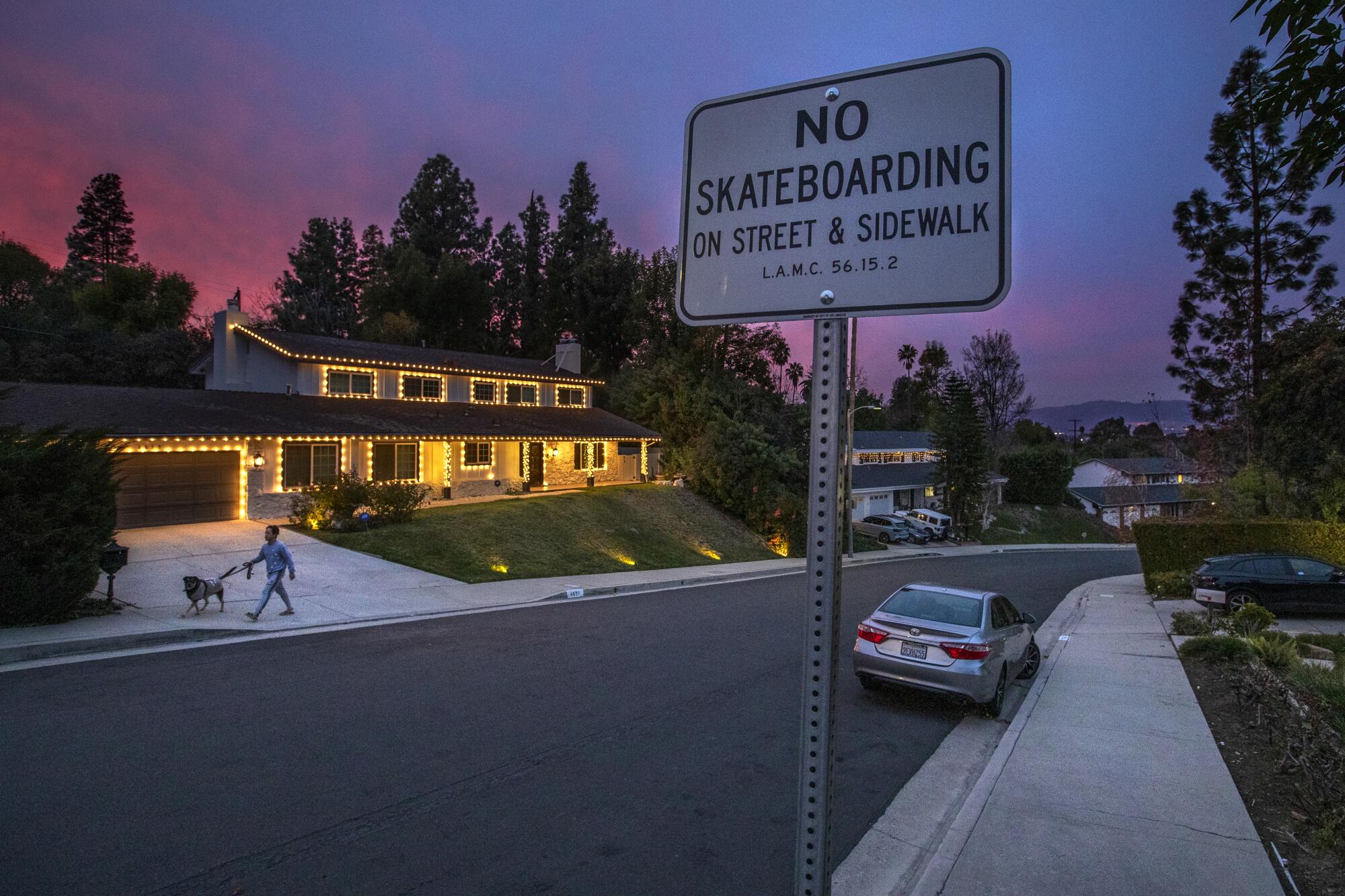
- Share via
The cul-de-sac ends at the top of a hill with a sweeping view of the San Fernando Valley. From there, Hermano Drive slopes downward, curving left and gradually steepening before snaking right at a precipitous trajectory more reminiscent of a black-diamond ski slope than a suburban neighborhood.
At the bottom is busy Reseda Boulevard, with just a stop sign between the corner of Hermano Drive and the dangerous cross-traffic.
But ever since 2016, the Tarzana enclave has had four other signs that can’t be found on any other road in Los Angeles. Made of metal, there are two on the way up and two on the way down, each declaring: “NO SKATEBOARDING ON STREET & SIDEWALK.”
As skateboarding has gone from a maligned subculture to an Olympic sport, the signs along this hillside lane citing Sec. 56.15.2 of the city’s municipal code — “No person shall ride a skateboard on Hermano Drive” — reflect the contentiousness that occasionally flares up over its more dangerous manifestations.

The ordinance was badly needed, 25-year-old Aaron Barlava, who grew up on Hermano Drive, said while shooting hoops outside his parents’ house one recent afternoon.
“We’d always have groups of kids come up here toward the top of the hill and race down on their skateboards at excessive speeds,” he said. “It’s not for the sake of saying we don’t like skateboarding. … It’s a safety hazard. That is a very steep hill.”
The tucked-away feel of this community of about two dozen homes attracted many of its residents to Hermano Drive. But it also once drew groups of teenagers who saw its topography and knew they had to “bomb” it.
Getting on a board and riding down a hill as fast as possible, known as “bombing a run,” is a dangerous, and sometimes deadly, pursuit. The list of fatal accidents includes two teenagers who died within a few months of each other more than a decade ago in San Pedro, spurring an ordinance that restricted where and how skateboards can be ridden citywide and described bombing hills as “a significant danger.”
But tall hills never stopped beckoning a certain breed of young adrenaline junkies. And about nine years ago, a group of them decided Hermano Drive was a spot worth bombing again and again.
***
When L.A. Councilman Bob Blumenfield started getting calls in 2015 from some Hermano Drive homeowners about groups of teens repeatedly slaloming past, he said, he “went over there and was like, ‘Damn, that does look like a fun run.’”
A self-described “skate rat” in his youth, Blumenfield nevertheless introduced the ordinance to bar skateboarding on the asphalt hill, labeling it an “extremely dangerous activity.” The municipal code, he noted, allows for ordinances restricting skateboarding in public places where skaters have exhibited “a willful or wanton disregard for the safety of persons or property.”
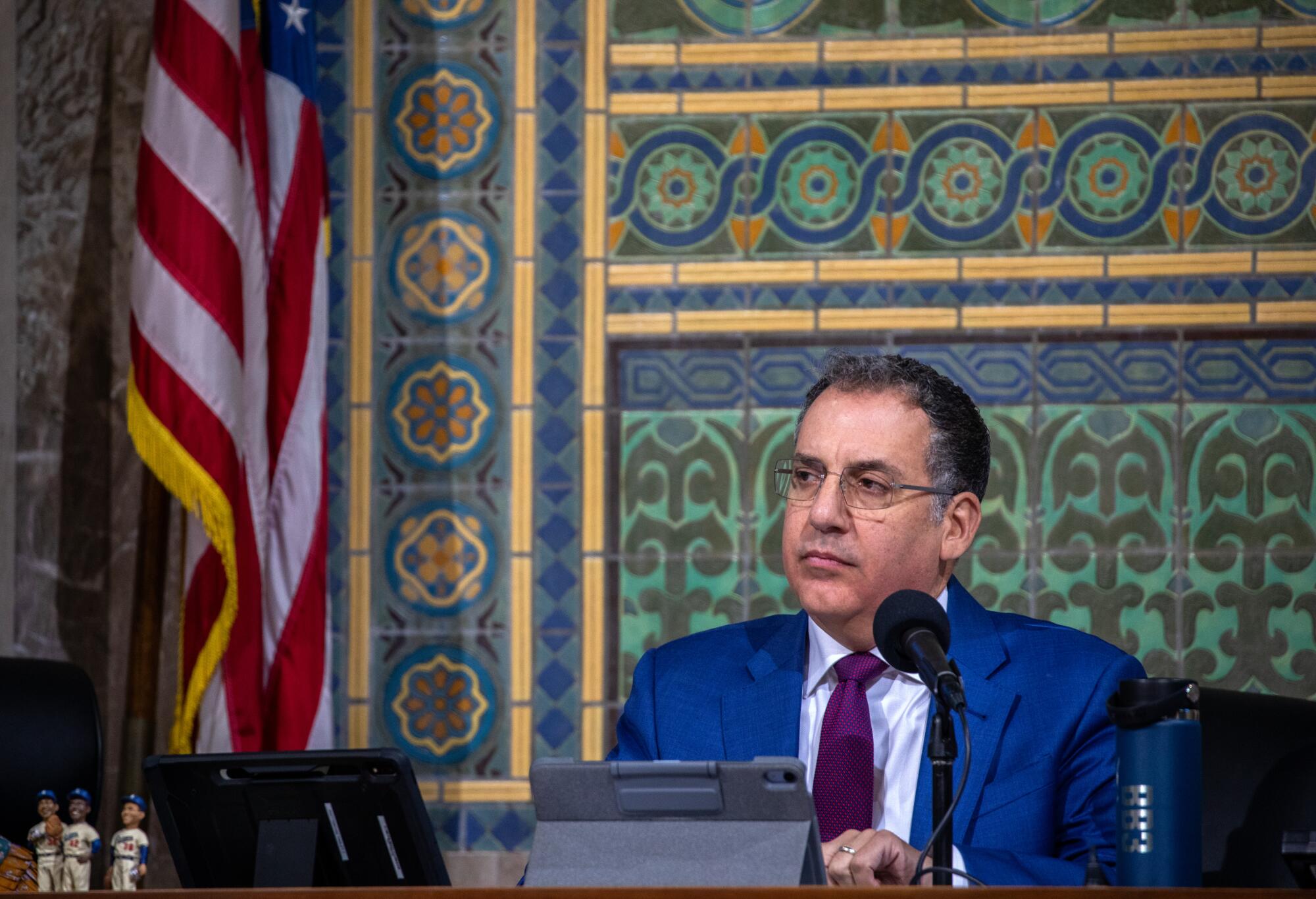
For months residents drove a little slower on Hermano, worried the combination of limited visibility and high speeds would eventually result in a skater being run over.
“I had to respond to the real safety concerns that community members had, which is this became the spot where kids would skate down — what they call bombing — and then veer off right at the end of the street,” the councilman said recently. “As you turn onto Reseda Boulevard, you don’t know what’s around the corner.”
In the years before the ordinance went into effect in April 2016, there were reports of multiple skateboarding injuries on the cul-de-sac, Blumenfield said, but there have been none since.
Sasoon Petrosian said he hasn’t seen a single skateboarder on the street since he moved into his house along one of the steepest stretches of Hermano Drive eight years ago.
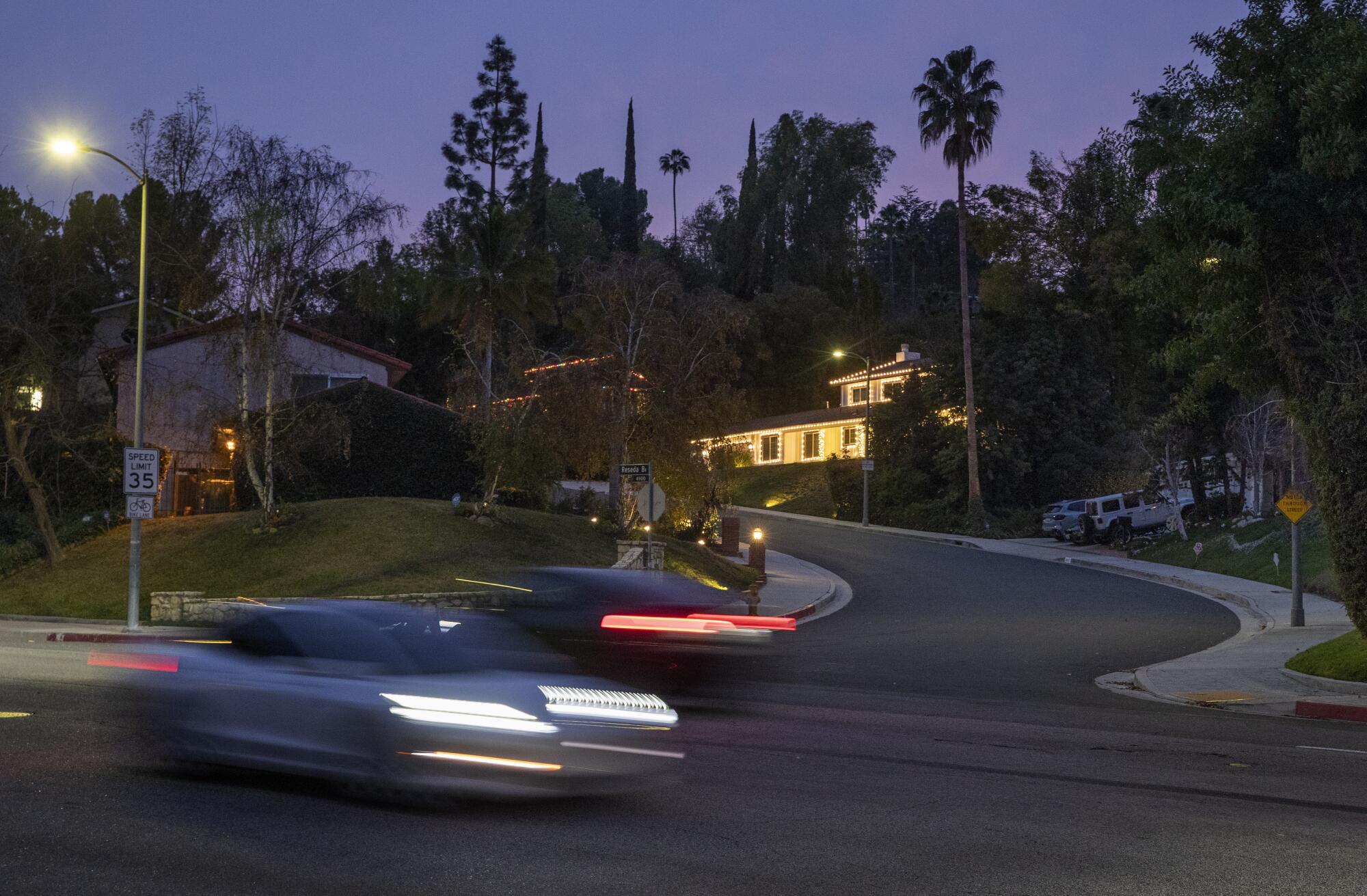
“I see cars coming up and driving fast back down, and runners come up here and run back down,” the 43-year-old engineering director said while taking a break from dismantling Christmas decorations on his porch. “I have not seen anybody skate here. [The ordinance] definitely has worked.”
But there have been at least 11 citations issued for skateboarding on the street, according to records obtained from the Los Angeles Police Department via public records request. The department did not provide additional information about the citations or how it enforces the law, which provides for a $50 fine for a first offense and $100 for subsequent violations.
While street bombing is no longer as popular as it once was and seems to have been eliminated on Hermano Drive, it’s still a point of contention in some communities.
Last summer, the San Francisco Police Department arrested 32 adults and cited 81 minors during a clash with participants and spectators at an annual skateboarding event dubbed the “Dolores Hill Bomb.” The unsanctioned event draws hundreds of people to the sheer hills near the city’s Mission Dolores Park — where the most daring of them careen down the public roadways at high speed, resulting in injuries and one death in past years.
The department said in a news release that law enforcement action at last year’s bomb was necessary because the gathering had turned into a “riot” after an altercation broke out between attendees and a police sergeant.
***
Skateboarders have long been at odds with police and property owners.
From the vilification they faced in the ‘70s and ‘80s, through the “skateboarding is not a crime” era that continued well into the 2000s, successive generations of boarders were maligned and driven out of many shared public spaces.
But the ascendance of skateboarding from an underground street diversion into a major industry and legitimate sports enterprise coincided with a transformation of its image in suburbs across America.
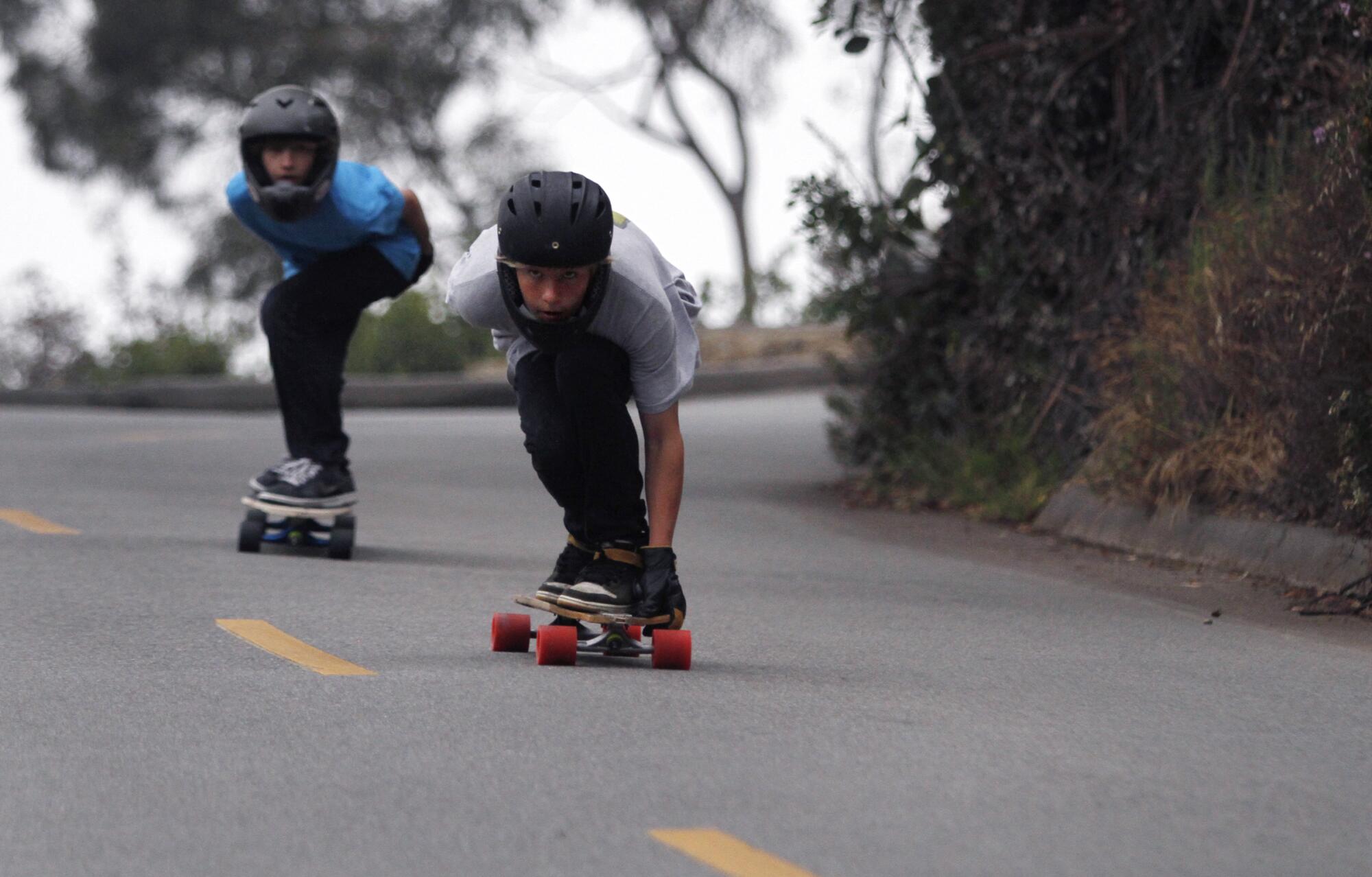
The best-selling video game franchise Tony Hawk’s Pro Skater, along with ESPN’s X Games and “Jackass” performer Bam Margera brought new generations of kids to skate culture.
Social media and YouTube made it so anyone with a board and a smartphone could share their latest tricks and falls with the world and interact with millions of other skaters doing the same. Then came the widening embrace during the COVID era of the ‘90s and early aughts skater aesthetic. Today, it’s not rare to see teenagers in the Valley wearing vintage Thrasher or Nirvana T-shirts over torn baggy jeans and Airwalks.
With its anointment as an Olympic sport in 2020, skateboarding completed its transition to widespread acceptance. Many young parents who grew up skating themselves now see it as a wholesome way to get their kids out from behind their computer screens, doing something active with other young people.
Late Friday afternoon, Cory Masson’s was one of about two dozen long, gold-bathed shadows that zipped across the graffitied pavement at Pedlow Skate Park in Encino — less than two miles from Hermano Drive. The 9-year-old disappeared straight down into the empty deep end of a smooth cement pool and popped back out on the other end, sticking the landing.
Born in 1977, Cory’s mom, Brenda Masson, grew up in the ‘90s skating in the Valley and “watching our boyfriends get hit in the head with skateboards by security guards.” She wasn’t familiar with Hermano Drive, but she described the fact that skateboarding was specifically banned there as “the oddest thing I’ve ever heard.”
Today, she spends long days at the skate park watching her son and chatting with other parents.
“Cory is on the spectrum and I was looking for something for him to do solo,” she said. “I think the skate population has grown exponentially, and there’s way more girls skating. We’ve seen an extreme positive change in it.”
***
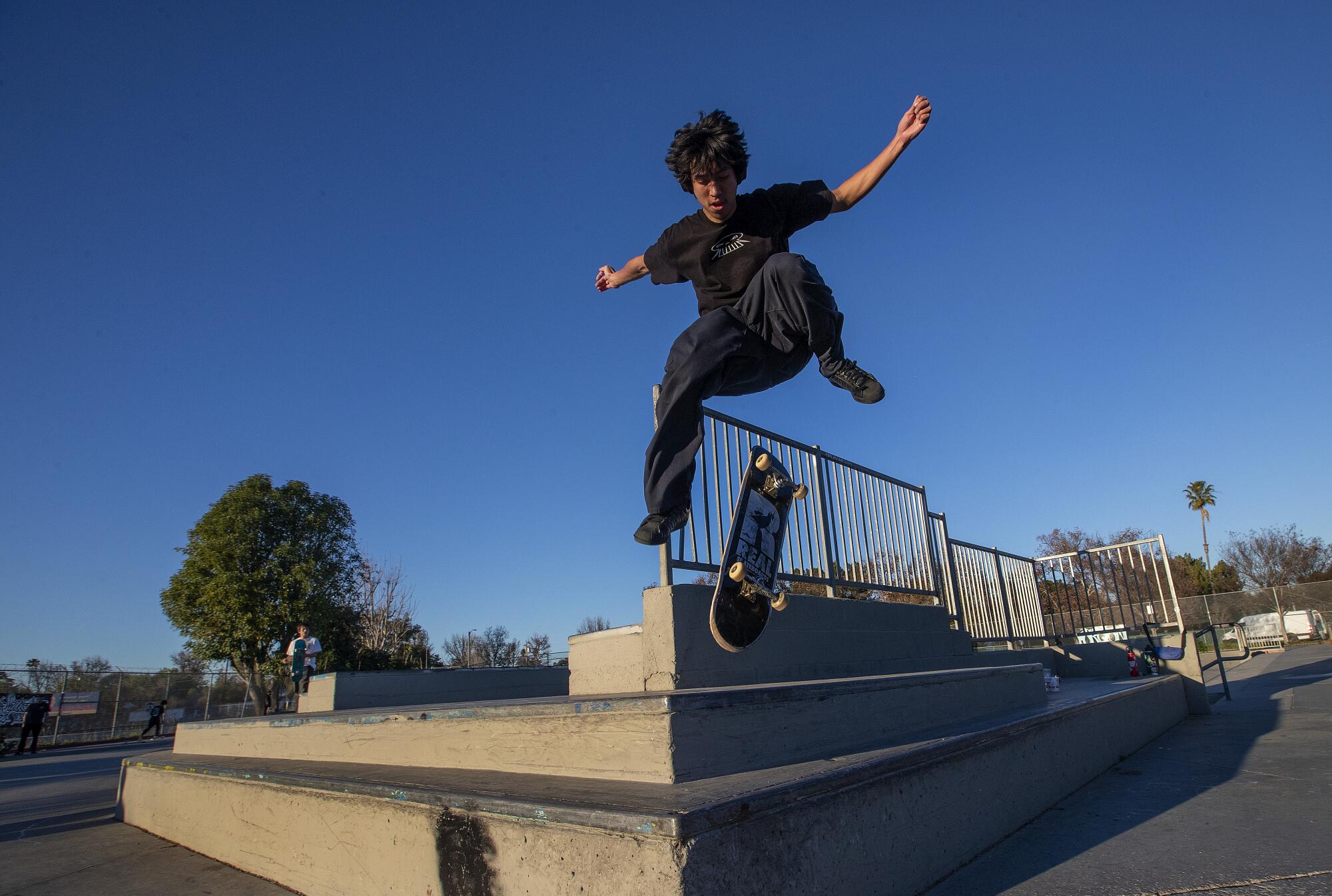
At the same time, there’s a rebel streak in the sport that refuses to die.
Martin Garcia said he “grew up bombing hills; that’s just something we did.” Asked what he liked about the death-defying runs, the 27-year-old Van Nuys resident’s eyes lit up as he recalled the feeling.
“It’s sick,” he said. “The fact that it’s dangerous as f—, that’s what attracts people. You go down that hill and escape death four times, it’s like, ‘Wow.’ And your homies are impressed.”
Ramon Black, 37, said he still skates Pedlow frequently. He understands the dangers of treacherous roads, but said he and his friends loved bombing another steep hill in the Valley when they were kids.
“I get why they do it. It’s a safety and liability issue,” Black said in between greeting friends as they rolled by. “When you’re young you don’t care about that stuff, but now that I’m older I know better.”
Eduardo Galvan is a lifelong skater who grew up in Venice, one of the sport’s crucibles. The 59-year-old is now “more of a cruiser” who rides his longboard mostly in the South Bay and runs a company in Tarzana that sells a range of products online, including skateboards.
Galvan said he’d never heard of Hermano Drive, but he doesn’t think the government should determine what spots are too dangerous to skate.
“We’re gonna do it regardless. If you’re a true skater it doesn’t matter, you’re gonna skate anyways,” he said. “This is your freedom.”
More to Read
Sign up for Essential California
The most important California stories and recommendations in your inbox every morning.
You may occasionally receive promotional content from the Los Angeles Times.











